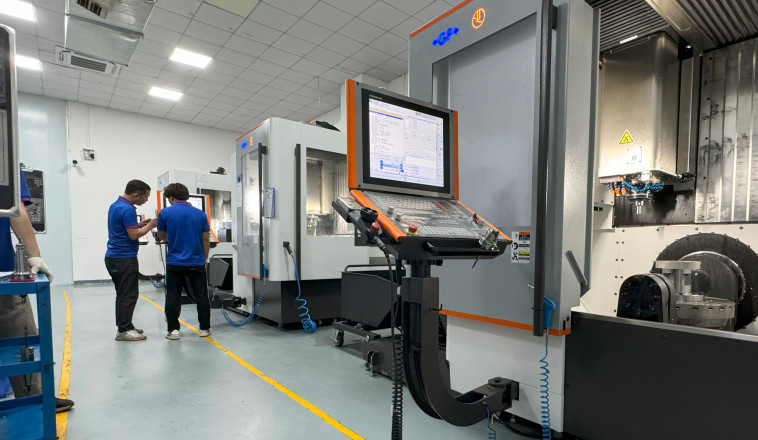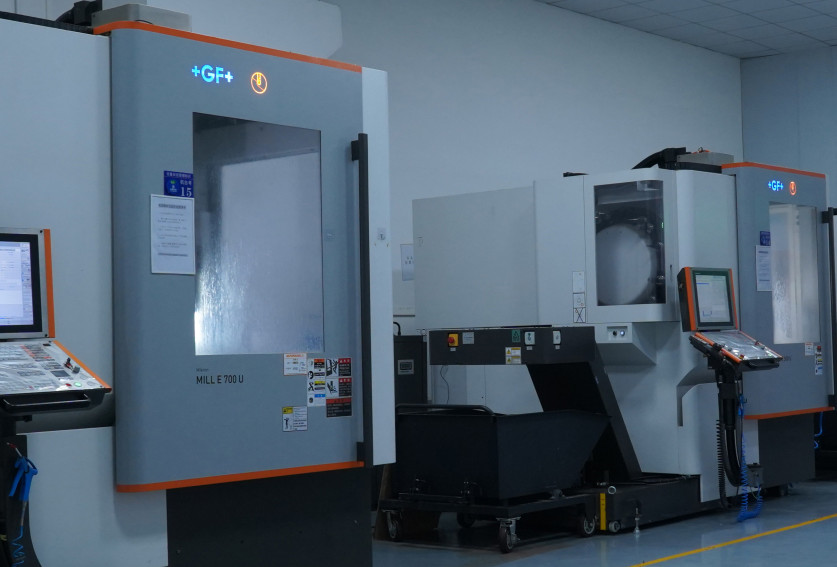Micron precision machining involves manufacturing components with tolerances measured in micrometers, typically ranging from 1 to 10 microns. This level of accuracy is essential for parts requiring exact fits and minimal deviations. The process utilizes advanced computer numerical control (CNC) systems, specialized tools, and rigorous quality checks to achieve repeatable results. In this article, the focus is on core techniques, equipment specifications, material handling, and practical applications across industries.
Core Techniques in Micron Precision Machining
Micron precision machining employs several established methods to shape materials with high accuracy. Each technique addresses specific geometric requirements and material properties.
CNC milling stands as a primary technique. It uses rotating cutters to remove material from a workpiece fixed on a table that moves in multiple axes. For micron-level precision, 5-axis CNC milling allows complex geometries without repositioning, reducing setup errors. Typical spindle speeds range from 10,000 to 30,000 RPM, with feed rates adjusted to 0.1 to 5 mm per minute depending on material hardness. Tool diameters can be as small as 0.1 mm, enabling features like micro-slots and intricate contours. Surface finishes achieve Ra values of 0.1 to 0.4 microns through optimized tool paths generated by software such as Mastercam.
CNC turning complements milling by rotating the workpiece against a fixed cutting tool. Swiss-style turning machines excel in micron precision for long, slender parts with length-to-diameter ratios exceeding 3:1. Bar stock diameters from 0.5 to 32 mm are common, with tolerances held to ±2 microns on diameters and ±5 microns on lengths up to 200 mm. Live tooling integrates milling operations during turning, minimizing cycle times. Coolant systems maintain thermal stability, preventing expansions that could exceed 1 micron.
Electrical discharge machining (EDM) is applied for hard materials or complex shapes where mechanical cutting is impractical. Wire EDM uses a thin wire electrode (0.02 to 0.3 mm diameter) to erode material via electrical sparks, achieving accuracies of ±1 micron. Sinker EDM employs shaped electrodes for cavities, with pulse durations of 1 to 200 microseconds and currents up to 50 amps. Both methods produce surface roughness of Ra 0.2 to 0.8 microns without burrs, suitable for tool steels and carbides.
Grinding operations refine surfaces post-machining. Precision grinding machines hold flatness to 1 micron over 100 mm spans, using wheels with grit sizes from 120 to 600. Cylindrical grinding maintains roundness within 0.5 microns for shafts up to 500 mm long. Temperature-controlled environments ensure dimensional stability during these processes.
These techniques integrate into workflows where initial roughing removes bulk material, followed by semi-finishing and finishing passes. Tool wear monitoring systems, such as laser sensors, detect deviations below 5 microns to maintain consistency.
Equipment and Tools for Achieving Micron Accuracy
Specialized equipment forms the backbone of micron precision machining. Machines must feature rigid structures, high-resolution encoders, and vibration dampening to minimize errors.
CNC machining centers from manufacturers like Haas or DMG Mori offer travels up to 1000 mm in X, 500 mm in Y, and 600 mm in Z axes, with positioning accuracies of 2 microns and repeatability of 1 micron. Spindle runout is limited to 0.5 microns at 20,000 RPM. Automatic tool changers with 30+ positions reduce downtime, while probing systems measure in-process dimensions to ±1 micron.
Swiss lathes, such as those from Citizen or Star, handle bar capacities to 42 mm, with guide bushings ensuring concentricity within 1 micron. Sub-spindles enable backworking, completing parts in one setup. Resolution on linear axes reaches 0.1 microns via glass scales.
EDM machines like those from Sodick or Charmilles provide wire tensions up to 15 N and flushing pressures of 10 bar for clean cuts. Electrode wear compensation algorithms adjust parameters to hold tolerances at ±2 microns over 100 mm cuts.
Grinders equipped with hydrostatic ways achieve parallelism of 1 micron. Wheel dressers maintain form accuracy to 0.5 microns, extending tool life.
Tools include carbide end mills with coatings like TiAlN for hardness up to 70 HRC materials, reducing deflection under loads of 50 N. Diamond-tipped tools for non-ferrous materials yield surfaces with Ra 0.05 microns. Metrology equipment, such as coordinate measuring machines (CMMs) from Zeiss, offer volumetric accuracies of 1.5 microns + L/350, where L is the measured length in mm.
The following table outlines key specifications for common equipment types:
| Equipment Type | Axis Configuration | Typical Tolerance (microns) | Spindle Speed (RPM) | Material Capacity |
|---|---|---|---|---|
| CNC Milling Center | 5-Axis | ±2 | 10,000-30,000 | Metals, Plastics up to 1000x500 mm |
| Swiss Turning Lathe | Multi-Axis with Live Tooling | ±1 on Diameters | 5,000-12,000 | Bars 0.5-42 mm Diameter |
| Wire EDM | 4-Axis | ±1 | N/A | Hard Materials up to 300 mm Thick |
| Precision Grinder | Surface/Cylindrical | ±0.5 | 1,000-3,000 | Parts up to 500 mm Long |
Materials Processed in Micron Precision Machining
Selection of materials impacts machinability, dimensional stability, and final part performance. Micron precision machining handles a range of ferrous, non-ferrous, and non-metallic substances.
Stainless steels like 316L offer corrosion resistance, machined to tolerances of ±3 microns with surface hardness of 20-30 HRC. Tool steels such as D2, with hardness up to 60 HRC, require EDM for features under 50 microns wide.
Aluminum alloys (6061, 7075) provide lightweight options, achieving ±2 microns on bores via high-speed milling at 20,000 RPM. Copper and brass enable electrical conductivity, with grinding yielding Ra 0.1 microns.
Titanium grades like Ti-6Al-4V demand low cutting forces to avoid work hardening, holding flatness to 5 microns over 200 mm. Plastics such as PEEK and Delrin maintain stability in medical applications, with tolerances of ±5 microns.
Composites and ceramics pose difficulties due to abrasiveness, but diamond tools achieve accuracies of 1 micron on features like holes in sapphire.
Material treatments, including heat treating to 50-65 HRC or anodizing to 10-20 microns thick, enhance properties post-machining.
A comparison of material properties relevant to machining is shown below:
| Material | Hardness (HRC) | Density (g/cm³) | Thermal Expansion (10⁻⁶/°C) | Typical Tolerance Achievable (microns) |
|---|---|---|---|---|
| Stainless Steel 316L | 20-30 | 8.0 | 16 | ±3 |
| Aluminum 7075 | 15-20 | 2.8 | 23 | ±2 |
| Titanium Ti-6Al-4V | 30-35 | 4.4 | 9 | ±5 |
| PEEK Plastic | N/A | 1.3 | 50 | ±5 |
Quality Control Measures in Micron Precision
Ensuring micron-level accuracy requires systematic inspection at every stage. Standards like ISO 9001:2015 guide processes, incorporating statistical process control (SPC).
In-process monitoring uses touch probes with 1 micron resolution to verify dimensions without unloading parts. Final inspections employ CMMs scanning points at densities of 100 per mm², generating reports with geometric dimensioning and tolerancing (GD&T) compliance.
Surface profilometers measure roughness to 0.01 microns Ra, while optical comparators check profiles at 50x magnification. Environmental controls maintain temperatures at 20±0.5°C to limit thermal variations to 0.5 microns per meter.
Traceability systems log machine parameters, tool usage, and operator data for each batch. Capability indices (CpK) target values above 1.67 for critical features.
Applications Across Industries
Micron precision machining supports components in demanding sectors where reliability is paramount.
In medical devices, it produces implant housings with bores of 0.5 mm diameter toleranced to ±2 microns, ensuring biocompatibility. Orthopedic tools feature threads with pitches of 0.25 mm.
Aerospace applications include turbine blades with airfoil profiles accurate to 5 microns, machined from superalloys. Fuel injectors have orifices of 50 microns diameter via EDM.
Automotive parts like sensor housings hold positional tolerances of 3 microns for assembly fits. Driveline components achieve concentricity within 2 microns.
Defense systems utilize optics mounts with flatness under 1 micron, supporting laser alignments. Electronics involve connectors with pin spacings of 0.1 mm.
These applications demonstrate the versatility of micron precision machining in delivering functional, high-performance parts.

Prototype Development and Production Scaling
Prototyping in micron precision machining uses production-grade equipment to validate designs early. Single-piece runs test tolerances like ±1 micron on prototypes up to 100 mm in size.
Transition to small-batch production involves fixture designs holding multiple parts, with cycle times under 5 minutes per unit. Volumes from 10 to 1000 pieces maintain consistency through automated pallet systems.
Engineering support includes CAD model imports for CMM programming, reducing setup times by 50%. Material selection optimizes for both prototype and scale-up phases.
